2013 MV Agusta F3 675 Vs. 2012 Triumph Daytona 675R - Video - Motorcycle.com
Triples, the ménage-à-trois of internal combustion cylinder arrangement, are making a comeback. Like disco, three-cylinder engines enjoyed a decade of glory in the ’70s only to fade into obscurity, besides a few random models, during the 1980s. Championing the format since its Hinckley phoenix, Triumph has succeeded in making three-cylinders cool again.
Now the Brits have competition from MV Agusta in the form of the F3 675, the Brutale 800 and 675, and the Rivale. And this fall, Yamaha revealed a new inline-Three engine racer that will surely make its way into an upcoming production bike.
Who’s next? Could we see a revived Kawasaki Mach III or Suzuki GT750 in four-stroke form? Hello, Laverda, are you next?
MV’s expanding line of three-cylinder models does more than beg to be cross-examined against Triumph’s Triples. MV’s F3 675 is not only the equal in displacement to the Daytona, its style is also has many parallels. So similar were our white with red highlights test units that a double-check was sometimes required to verify which bike we were actually riding. Their differences became more apparent, though, with each circulation of Willow Springs Raceway.
“If this was a beauty contest, the F3 would be the easy victor,” editor-at-large, Troy Siahaan, subjectively says of the MV. Considering most motorcycle purchases are emotional, rather than practical in nature, you might conclude this review right here. But for those desiring more detail about the discrepancies between the two, whether for vicarious or investigative reasons, we offer the following track comparison.
With nearly identical wheelbases (54.9 inches for the MV vs 54.2 inches in the Daytona) and rake/trail figures (23.9˚/3.50 inch MV vs 23.6˚/3.89 inch Daytona), the MV’s nimbleness could be attributed to its exotic counter-rotating crankshaft, which is specifically meant to reduce gyroscopic inertia forces, thus increasing its flickability.
The lack of a steering damper may also be a reason for the F3’s sharp responses. While this enhances agility, it comes at a cost of some stability – the MV exhibited headshake when hard on the gas while the stabilizer-equipped Daytona never did.
Curb weights are nearly identical. We didn’t weigh them ourselves, but published reports reveal the Triumph scales in at 422 pounds with its 4.6-gallon tank filled compared to the F3’s 426 pounds with 4.2 gallons of fuel.
Both bikes wear fully adjustable suspension components, but the Triumph’s Öhlins components offered better control on the bumpy track than that of the MV’s Marzocchi fork and Sachs shock combination.
“More road imperfections are transmitted to the MV rider,” says Siahaan. “The Triumph better soaks up the minor irregularities, allowing the rider to concentrate on going fast.” In contrast, the F3’s suspension wasn’t as settled and required several adjustments to optimize it for riding fast around Willow.
When it comes to scrubbing speed the MV’s two-piece Brembo calipers surprisingly outclassed the Triumph’s higher-spec monobloc Brembos.
“It was a little disconcerting hopping on the Triumph after the MV because the difference in initial bite is dramatic,” says Siahaan. “The difference in braking markers between the two bikes is several yards apart.” Brake pad material may play a role, but it’s more likely that the MV’s 12mm larger-in-diameter rotors (320mm vs 308mm) are most responsible for its strong braking performance.
Technologically speaking, the Daytona is simply outgunned by the MV and its armada of applied science, including ride modes, programmable engine braking, ride-by-wire throttle, and traction and wheelie control. These technologies help justify the F3’s $14k asking price ($12,700 for the Daytona R) but are also necessary in offsetting some of the bike’s shortcomings.
In the Sport setting the MV’s throttle application can be described as touchy, but a better characterization comes from Duke, saying that “a few millimeters of twist results in what seems like about half throttle, so a rider has to be very precise with his inputs. Then the final three-quarters of twistgrip rotation doesn’t deliver a corresponding increase in power. Dealing with its anti-linear response steals away brain power from just concentrating on running quick laps.”
MV’s engine-management system has a Custom option that allowed us to dial back its throttle jumpiness to a limited extent. We were rewarded with a more user-friendly throttle experience, although it was never as smooth as the Daytona’s.
No settings, however, are able to overcome the Daytona R’s superior engine output: another consensus among the testers. “My butt dyno measures the Triumph engine as having more bottom and mid-range power,” says Siahaan.
“The F3’s midrange power is notably soft compared to the Triumph’s,” Duke adds. “The Daytona’s three-cylinder engine remains the most flexible of any middleweight supersport, heaving itself forward with gusto even at sub-stratospheric revs.”
Both bikes come equipped with quick-shifters, and while it was the Daytona R’s only answer to the MV’s arsenal of technology, Triumph got it right with a component that seems to require a lighter toe flick compared to the MV.
The Daytona’s 32.7-inch seat height might be problematic for some shorter riders, although it’s a more comfortable perch than the thinly padded F3’s that sits 32.0 inches off the ground. The lower handlebars of the Triumph are offset by a shorter reach for the rider.
Troy didn’t care for the way in which the MV’s tank tapers away from the rider, making it difficult to grip when cornering. “In long sweepers I was concentrating on staying on the bike because I was worried about my leg slipping rather than focusing on the corner,” he says.
At a quick glance, the digital instruments of the F3 are more discernible than the white-on-black layout of the Daytona’s gauges, but the Triumph’s gauges are preferable overall despite a gear indicator that isn’t easy to see. The F3’s bar-graph tach is challenging to read at a glance, and we often hit the rev limiter until reverting to the old-school way of shifting its transmission according to exhaust sound and engine feel.
Conversely, the Triumph’s analog tach and shift-light design is as good as it gets. “I definitely liked the scaled way in which the blue shift lights of the Triumph indicate it’s time to shift,” Duke compliments.
By the end of our Moto Forza-sponsored trackday (click this link to see a story and video from a previous outing with the respected SoCal dealership), we had concluded that despite the similarities of these two motorcycles there’s a great divide between how they perform on a racetrack. Largely this comes down to the undemanding mannerisms of the Triumph versus the precision the MV requires of its pilots.
“The Triumph is much easier to ride,” says Siahaan. “To get the most out of the MV, you really have to ride it hard—it doesn't suffer fools gladly.”
Considering the Triumph’s lesser price and lack of technological innovation, it nevertheless stands as the clear layman's winner and the bike Siahaan would choose to inhabit his garage. “If I had to pick one, it would be the Triumph. I'm comfortable on it, and it doesn't punish me for riding it less than 9/10ths,” he says.
But for those with a taste for the exotic and are willing to pay the premium, the MV Agusta F3 675 is a step above the bourgeoisie. It’s a beautifully crafted motorcycle adorned with the latest in adjustable electronics. It may not necessarily be a better motorcycle, but as we stated in the beginning of this article, motorcycle commerce isn’t confined to practicality. And when it comes to quixotic purchases, the MV F3 certainly stirs the soul.
But the middleweight-Triple landscape is shifting. Lucky-Ass-Editor Siahaan recently returned from Cartagena, Spain, where he sampled the all-new 2013 Daytona 675R. Like the significantly improved 2013 Street Triple R we tested last month, the new Daytona promises to be an even better version of its predecessor. Looks like we’ll have to do this shootout all over again!
Related Reading
2013 Triumph Street Triple R Review
2013 Triumph Daytona 675 and 675R Unveiled
2013 MV Agusta F3 675 Review - Video
2013 MV Agusta F3 675 Street Review
2013 MV Agusta F4, F4 R & F4 RR — More Motorcycle, Same Amount of Art
2011 Middleweight Sportbike Shootout - Track - Video
2011 Middleweight Sportbike Shootout - Street
2009 Kawasaki ZX-6R vs. Triumph Daytona 675
2008 Supersport Shootout: Honda CBR600RR vs. Triumph Daytona 675 vs. Kawasaki ZX-6R vs. Yamaha R6 vs. Suzuki GSX-R600
More by Tom Roderick























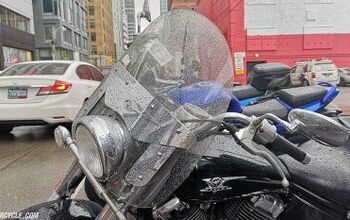


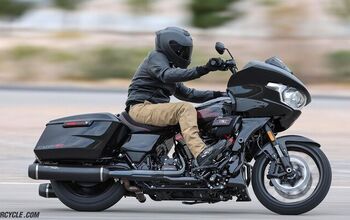
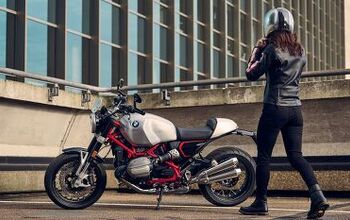

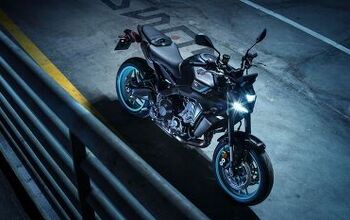
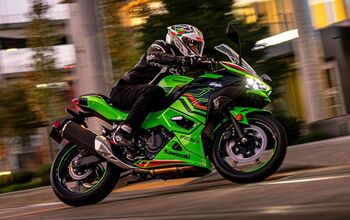
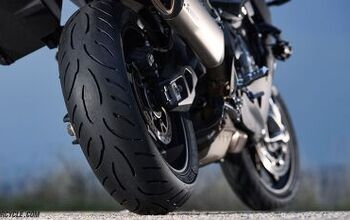



Comments
Join the conversation